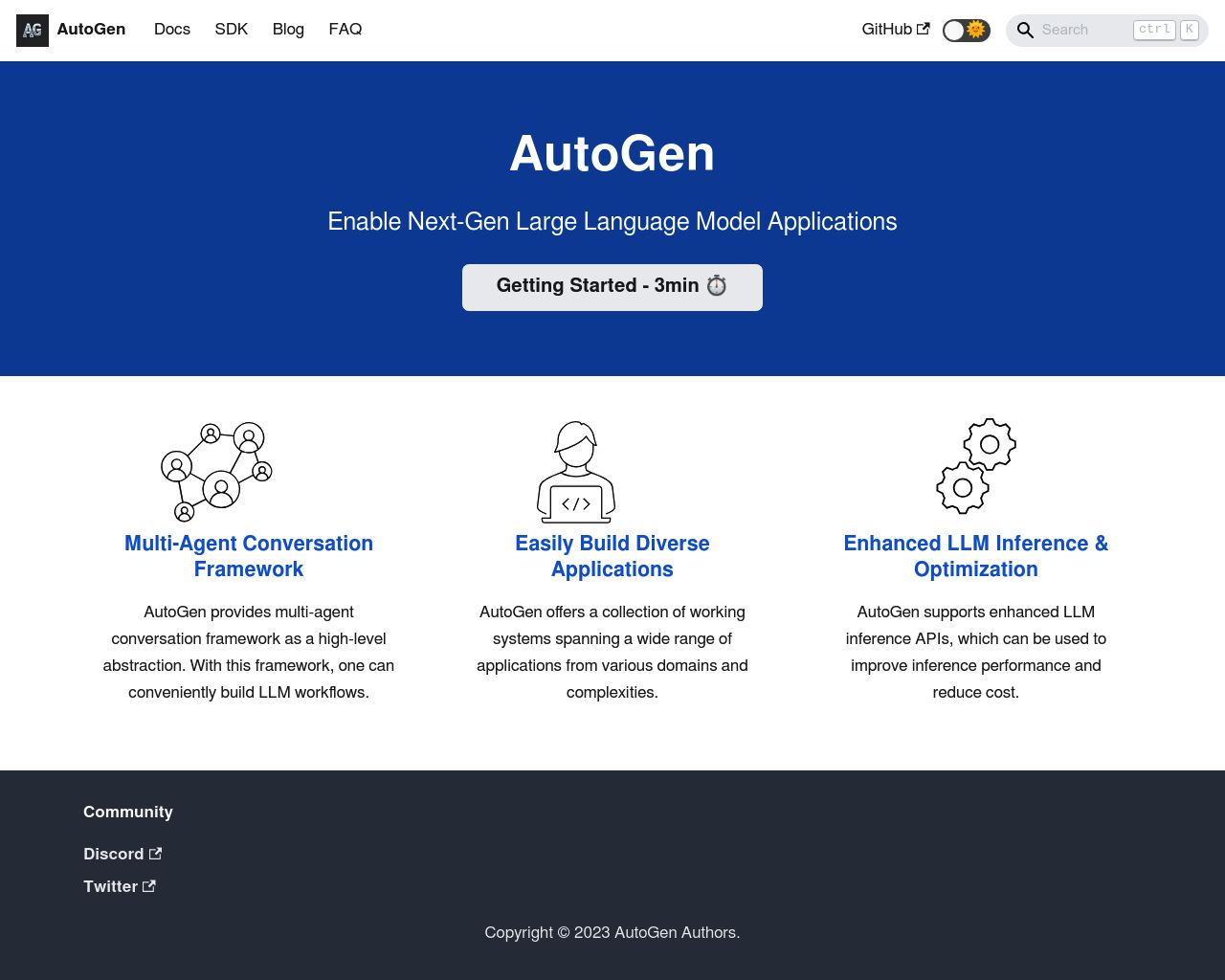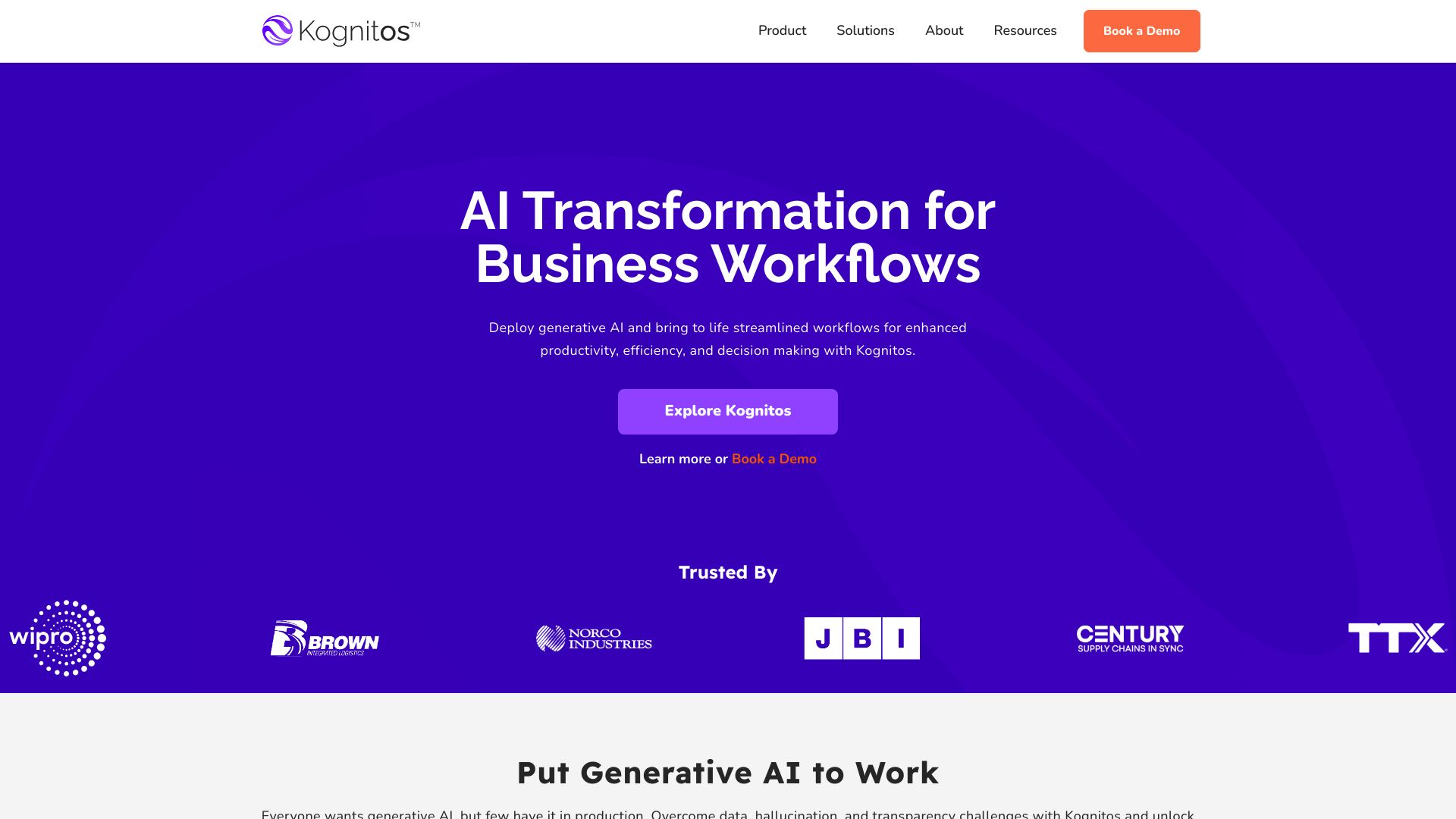AutoGen vs. Kognitos: Core Feature Comparison
AI-powered automation platforms revolutionize how businesses streamline operations and enhance productivity. This comparison explores AutoGen, Kognitos, and SmythOS, three distinct approaches to AI agent development and deployment. AutoGen offers a flexible framework for creating multi-agent systems through code, while Kognitos emphasizes natural language-driven automation. SmythOS emerges as a comprehensive solution, combining powerful features with user-friendly interfaces. We’ll examine each platform’s core capabilities, integration options, and security features to help you determine the best fit for your AI automation needs. Whether you’re a developer seeking advanced customization or a business user looking for accessible AI tools, this analysis provides valuable insights to guide your decision-making process.
AutoGen Overview
AutoGen empowers developers to build sophisticated AI applications using multi-agent conversations. This open-source framework enables the creation of customizable, conversable agents that interact with each other, Large Language Models (LLMs), tools, and humans to tackle complex tasks.


AutoGen maximizes LLM performance through enhanced inference capabilities, including tuning, caching, error handling, and templating. This optimization proves crucial for leveraging expensive LLMs effectively. The framework supports both fully autonomous agent operations and human-in-the-loop problem-solving, offering flexibility for applications where human input is essential.
AutoGen maximizes LLM performance through enhanced inference capabilities…This optimization proves crucial for leveraging expensive LLMs effectively.
Demonstrated effectiveness spans a wide range of applications, from automated task solving and code generation to continual learning and complex problem-solving in group chats. For developers, AutoGen provides debugging tools and logging functionalities for API calls, essential for diagnosing and optimizing LLM-based systems.
While AutoGen offers powerful capabilities, it requires coding knowledge for setup and configuration. The lack of a visual builder or no-code editor may present a barrier for non-technical users. Additionally, the framework’s focus on code-based workflows might limit its accessibility for those seeking drag-and-drop interfaces or pre-built templates.
AutoGen integrates with various APIs and tools, supporting OAuth authentication and API key-based access. This flexibility allows for seamless incorporation into existing tech stacks. The framework’s scalable deployment options and integration with cloud services position it well for enterprise-level applications, though specific features like hosted vector databases or specialized crawlers are not explicitly mentioned.
Kognitos Overview
Kognitos revolutionizes automation with its AI-powered platform that understands and executes tasks using plain English. This innovative approach eliminates the need for complex coding or traditional bot management, making sophisticated automation accessible to a wider range of users.


Kognitos integrates generative AI with traditional logic, creating a powerful system that learns and adapts through natural dialogue. Users build automations, handle exceptions, and review logs using simple language, significantly reducing the technical barriers often associated with automation tools.
Kognitos integrates generative AI with traditional logic, creating a powerful system that learns and adapts through natural dialogue.
The platform’s key strengths lie in its adaptability and seamless integration capabilities. Kognitos handles exceptions by learning from user input, making it highly resilient to process changes. It offers wide-ranging integration with third-party applications and supports multiple operating systems, overcoming the limitations of Windows-based alternatives.
Kognitos excels in document processing, Excel manipulation, email handling, and integration with systems like Salesforce. This versatility positions it as a comprehensive solution for businesses looking to streamline operations across various domains.
While Kognitos offers impressive capabilities, potential users should consider their specific needs and technical expertise when evaluating the platform. The learning curve associated with leveraging AI-driven automation effectively may require some initial investment in time and resources.
Kognitos aims to democratize AI power by making automation accessible and understandable to all users. This vision aligns with the growing trend of empowering non-technical professionals to harness AI capabilities, potentially reshaping how businesses approach process optimization and digital transformation.
Feature Comparison
AutoGen and Kognitos offer contrasting approaches to AI agent development and deployment. AutoGen provides a flexible framework for creating multi-agent systems using code, while Kognitos focuses on natural language-driven automation. This fundamental difference impacts their core components and security features.
AutoGen excels in customizable agent creation and collaboration, supporting autonomous operations and human-in-the-loop problem-solving. It offers debugging tools and logging functionalities crucial for optimizing LLM-based systems. However, AutoGen lacks a visual builder or no-code editor, potentially limiting accessibility for non-technical users.
Kognitos, conversely, emphasizes user-friendly automation through plain English interactions. Its platform integrates generative AI with traditional logic, enabling adaptable workflows that learn from user input. Kognitos offers seamless integration with third-party applications and supports multiple operating systems, overcoming limitations of Windows-based alternatives.
In terms of security, neither platform explicitly mentions features like constrained alignment or data encryption. AutoGen supports OAuth authentication for API integrations, while Kognitos’ security measures are not clearly defined in the provided information. This gap in security feature documentation may be a concern for enterprises with stringent data protection requirements.
Feature Comparison Table
| AutoGen | Kognitos | SmythOS | |
|---|---|---|---|
| CORE FEATURES | |||
| Visual Builder | ❌ | ❌ | ✅ |
| No-Code Options | ❌ | ✅ | ✅ |
| Agent Work Scheduler | ❌ | ✅ | ✅ |
| SECURITY | |||
| Constrained Alignment | ❌ | ❌ | ✅ |
| IP Control | ❌ | ❌ | ✅ |
| COMPONENTS | |||
| Zapier APIs | ✅ | ❌ | ✅ |
| Data Lakes | ❌ | ❌ | ✅ |
| DEPLOYMENT OPTIONS (EMBODIMENTS) | |||
| Deploy as Webhook | ✅ | ❌ | ✅ |
| Staging Domains | ❌ | ✅ | ✅ |
| Production Domains | ❌ | ✅ | ✅ |
| Deploy as Site Chat | ✅ | ❌ | ✅ |
| Deploy as Scheduled Agent | ❌ | ✅ | ✅ |
| Deploy as GPT | ✅ | ❌ | ✅ |
| DATA LAKE SUPPORT | |||
| Hosted Vector Database | ❌ | ❌ | ✅ |
| Sitemap Crawler | ❌ | ❌ | ✅ |
| YouTube Transcript Crawler | ❌ | ❌ | ✅ |
| URL Crawler | ✅ | ❌ | ✅ |
Conclusion
AutoGen, Kognitos, and SmythOS each offer unique approaches to AI agent development and deployment. AutoGen provides a flexible framework for creating multi-agent systems using code, while Kognitos focuses on natural language-driven automation. SmythOS, however, stands out with its comprehensive and user-friendly platform that combines the best of both worlds.
SmythOS excels in its intuitive drag-and-drop interface, extensive integration ecosystem, and versatile deployment options. Unlike AutoGen, which requires coding knowledge, or Kognitos, which primarily focuses on natural language interactions, SmythOS offers a visual builder and no-code editor that makes AI agent creation accessible to both technical and non-technical users. This democratization of AI development aligns perfectly with the growing need for efficient, scalable AI solutions across industries.
While AutoGen and Kognitos have their strengths in specific areas, SmythOS provides a more holistic approach to AI agent development. Its support for multimodal interactions, problem-solving capabilities, and multi-agent collaboration surpasses the offerings of its competitors. Furthermore, SmythOS’s robust security features, including constrained alignment and data encryption, address the critical concerns of enterprise users, making it a more compelling choice for businesses with stringent data protection requirements.
For those looking to harness the full potential of AI agents, SmythOS offers a risk-free opportunity to get started. With its user-friendly interface, extensive integration options, and powerful deployment capabilities, SmythOS empowers users to create and manage AI agents that can truly transform their workflows. Explore our diverse range of AI-powered agent templates to jumpstart your journey into the future of AI automation and experience firsthand how SmythOS can revolutionize your approach to AI development and deployment.
Last updated:
Disclaimer: The information presented in this article is for general informational purposes only and is provided as is. While we strive to keep the content up-to-date and accurate, we make no representations or warranties of any kind, express or implied, about the completeness, accuracy, reliability, suitability, or availability of the information contained in this article.
Any reliance you place on such information is strictly at your own risk. We reserve the right to make additions, deletions, or modifications to the contents of this article at any time without prior notice.
In no event will we be liable for any loss or damage including without limitation, indirect or consequential loss or damage, or any loss or damage whatsoever arising from loss of data, profits, or any other loss not specified herein arising out of, or in connection with, the use of this article.
Despite our best efforts, this article may contain oversights, errors, or omissions. If you notice any inaccuracies or have concerns about the content, please report them through our content feedback form. Your input helps us maintain the quality and reliability of our information.
